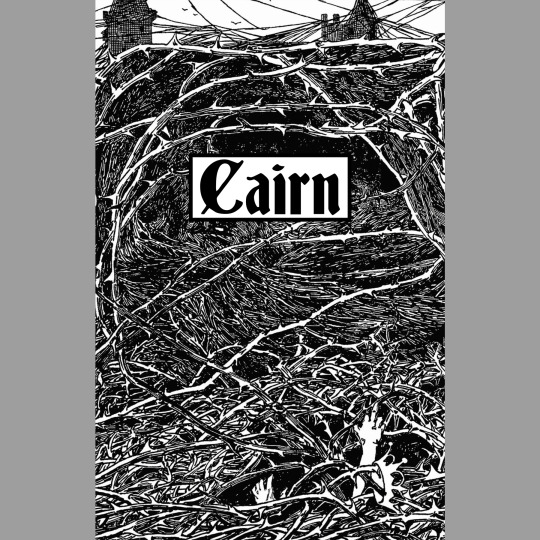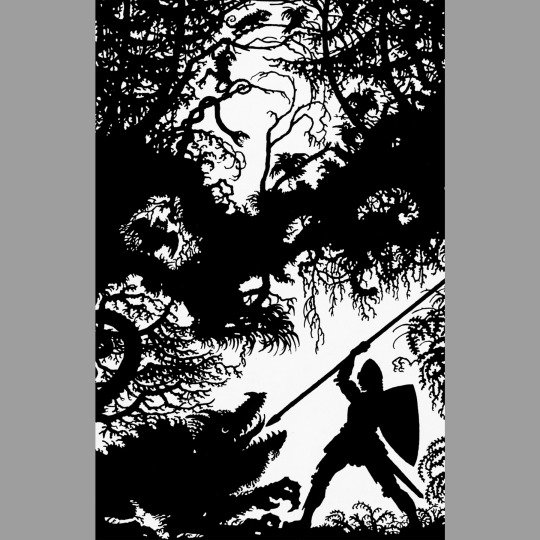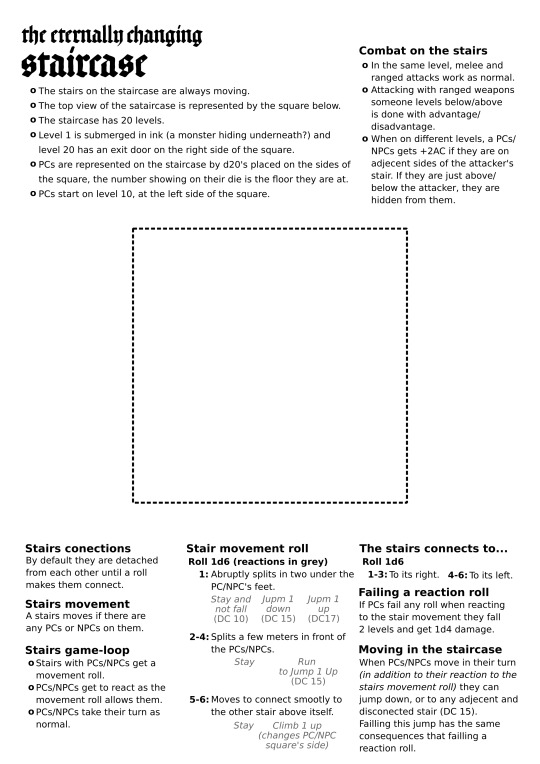#Cairn
Explore tagged Tumblr posts
Text





Corrimony Bronze Age Chambered Cairn, The Highlands, Scotland
#ice age#stone age#bronze age#iron age#prehistoric#prehistory#neolithic#mesolithic#paleolithic#archaeology#chambered cairn#cairn#burial chamber#burial mound#burial ground#ancient cultures#ancient living#ancient craft#stonework#Scotland
483 notes
·
View notes
Text

16-6-24
#moleskine#sketchbook#sketch#daily#dailyart#dailydrawing#dailypainting#dailysketch#sketchaday#artoftheday#art#artbook#artists on tumblr#watercolor#gouache#painting#fineliner#drawing#stones#cairn#stack#marker#teal
531 notes
·
View notes
Text
1d8 "Free" Fantasy RPGs To Replace 5e At Your Table
D&D 5e sure is a roleplaying game, and it's one that I have enjoyed a lot. However, that doesn't mean that I'd recommend it automatically for other people. This has many reasons, which I won't elaborate here. It has also shaped the perception of TTRPGs significantly thanks to its market dominance, and not in a good way.
5e has a reputation for being an expensive, complex game, and 5e players fear that other RPGs might just be the same. That it's too much of a hassle and too much of a financial burden to switch systems.
So, to help 5e players pick out a different system, I've made this handy 1d8 rolling table to help them pick a fantasy TTRPG with a combat component that they can try instead!

Let's now go through these eight nine RPGs and see what's up with them, right below the "Keep reading" section!
I'll be listing some metrics like the page count for the rulebook(s), the core resolution mechanic, how complex the game is in terms of character creation & combat, and how well-supported the game is by their publisher and the community-at-large.
1. Cairn
Author: Yochai Gal
Release Year: 2020
Cost: Free PDF, printed copies cost between $3 to $10 depending on the print quality.
Page Count: 24
Website: https://cairnrpg.com/
Resolution Mechanic: 1d20 Roll Under system for ability checks/saving throws, attacks hit automatically, "fiction-first".
Action Economy: Movement + one action per round.
Characters: Random character creation, class-less and level-less, advancement based on "Scars" (suffering damage that reduces your HP exactly to 0)
Setting: Implied. Low-magic European-style fantasy; mysterious woodlands.
Other Noteworthy Mechanics: Hit Protection and Ability damage instead of HP, Slot-Based Inventory.
Degree of Support: Very high. Available in fifteen languages (e.g. Spanish, Russian, Chinese, and German); full rules text is under CC-BY-SA 4.0; multiple published third-party adventures & supplements available; some official bonus material (e.g. bestiary, magic items/relics, and spells) is available for free on the website.
Addendum: An expanded 2nd Edition is currently on Kickstarter (ends April 26th 2024); Cairn is legitimately easy to learn, however the Hit Protection system and the connected Scars system is a very different abstraction to health and advancement compared to 5e.
2. Cloud Empress
Author: worlds by watt
Release Year: 2023
Cost: Free PDF of the rulebook and the creator-written sample adventure "Last Voyage of the Bean Barge", $20 for the print edition of the rulebook, $12 for PDF supplements, $25 for print + PDF supplements; free solo rules also available as PDF only.
Page Count: 60
Website: https://cloudempress.com/
Resolution Mechanic: d100 Roll Under system for stat checks/saving throws, critical successes or failures on doubles (11, 22, 33, etc.), 5e-style advantage/disadvantage, attacks generally hit automatically.
Action Economy: Two actions per round with no free movement.
Characters: Semi-random character creation, four classes ("jobs"), no rules for character advancement in the ruleset.
Setting: Specific. "Ecological science fantasy" heavily inspired by Hayao Miyazaki's "Nausicaä of the Valley of the Wind"; costly magic, giant insects, dangerous mushrooms; only human player characters.
Other Noteworthy Mechanics: Damage points culminate in Wounds; Wounds and Stress as ways to track your character's physical and mental state; slot-based inventory system.
Degree of Support: Low-ish. Several official supplements exist, however third-party material is very sparse. May improve due to the recent establishment of a Cloud Empress Creators Fund, has a simple 3rd party license system.
Addendum: A supplement, "Cloud Empress: Life & Death" is currently on Kickstarter (ends April 26th 2024, yes, the same day as Cairn 2e) and as a disclaimer I even backed that current Kickstarter; Cloud Empress is built on the engine of the sci-fi horror RPG "Mothership"; clearly built for one-shots and short campaigns; has a wonderful resting system that encourages roleplay between players.
3. Iron Halberd
Author: level2janitor
Release Year: 2023
Cost: Free PDF of the rules; no print option available.
Page Count: 60
Website: https://level2janitor.itch.io/iron-halberd
Resolution Mechanic: 1d20 + Bonus Roll Over system against difficulty or armor rating, however most non-combat-related actions follow a fiction first approach without dice rolls.
Action Economy: Movement + one action per round.
Characters: Semi-random character creation, class-less but there are four different "gear kits" that nudge your character towards certain archetypes, levelling up with XP.
Setting: Essentially non-existant. General European fantasy with magic, gods may or may not exist/shape the world, various fantastic ancestries included.
Other Noteworthy Mechanics: Includes rules for building strongholds and maintaining warbands; slot-based inventory with a durability mechanic.
Degree of Support: None. The game is intended to be relatively compatible with other OSR content and the creator suggests using adventures made for the D&D retroclone Old-School Essentials if you wanna use pre-published ones. An official introductory adventure, "Sea-Spray Bay", is apparently in the works. No 3rd party license available, as far as I know.
Addendum: One thing about Iron Halberd I like especially is how it uses random tables for generating equipment. Most of the equipment is listed in a numerical order by category, and the various gear kits include references on different rolling formulas for those equipment categories. For example someone taking the "soldier's kit" rolls twice on the d20 Weapons table and takes their preferred pick, while someone taking the "sage's kit" only rolls a d4 on that table.
4. Mausritter
Author: Isaac Williams
Release Year: 2020
Cost: Free PDF of the ruleset available; box set with the rules and several goodies including an adventure costs $55; additional box set + PDFs containing eleven official adventures costs $55 (or $20 digital-only).
Page Count: 48
Website: https://mausritter.com/
Resolution Mechanic: 1d20 Roll Under system, 5e-style advantage/disadvantage, attacks always hit.
Action Economy: Movement + one action per round.
Characters: Random character creation, class-less, levelling up with XP.
Setting: Vaguely specific. You play as mice and everything is related to mouse-size; cats are the equivalents of devils or dragons; humans exist as a setting background but may or may not be present in a campaign.
Other Noteworthy Mechanics: Includes rules for recruiting warbands; slot-based inventory with a durability mechanic.
Degree of Support: Very high. Several official supplements exist, as well as loads of content, be it adventures or supplements, made by other creators. Available in seven languages (all of them however are European). Has a simple 3rd party license system.
Addendum: Mausritter uses the phrase "adventure site" instead of dungeons. On the website a free adventure site generator is available, as is a digital tool that can be used to generate your own item cards for the slot-based inventory system.
5. Maze Rats
Author: Ben Milton
Release Year: 2017
Cost: $4.99 for the PDF, no print option regularly available.
Page Count: 32
Website: https://questingbeast.substack.com/
Resolution Mechanic: 2d6 + Bonus Roll Over system; advantage system that uses 3d6 drop the lowest + Bonus.
Action Economy: Movement + one action per round.
Characters: Semi-random character creation, class-less but instead there are character features (e.g. spell slots or attack bonuses), levelling up with XP.
Setting: Essentially non-existant. Magic is very irregular (s. the section below), but otherwise it implies a vaguely European fantasy setting.
Other Noteworthy Mechanics: Spells are randomly generated each adventuring day and spell effects are negotiated between the GM and the spellcasting player; includes several fantastic d66 tables that can be used to randomly generate worlds.
Degree of Support: Decent. The rule text is licensed under CC BY 4.0 and unofficial translations are available. Some third-party content has been made specifically for the game.
Addendum: The only purchase-only game on this list. However "unofficial" distribution of the PDF is very common. Also this is the oldest game on the list. Ben "Questing Beast" Milton is a prolific OSR blogger and runs a YouTube channel on the OSR. Great dude.
6. Sherwood - A Game of Outlaws & Arcana
Author: Richard Ruane
Release Year: 2022
Cost: Free quickstart PDF titled "Sherwood - A Quickstart of Outlaws" available; digital rulebook costs $7.50 and the print edition (including PDF) costs $15.
Page Count: 25 (Quickstart), 32 (Rulebook)
Website: https://www.r-rook.studio/
Resolution Mechanic: 2d6 + Bonus Roll Over system for skill checks (including attacks), 2d6 Roll Under system for saving throws; advantage & disadvantage system that involves rolling 3d6 and using the higher/lower of the two results; almost all rolls are player-facing
Action Economy: "Conversational", assumption of movement + action.
Characters: Largely choice-based character creation. Combine two (of six) background abilities with the benefits of seven different careers. Big focus on interpersonal relationships during character creation. Limited character advancement takes place during downtime.
Setting: Specific. Takes place in a fantastical version of 13th century England, with fey and magic coexisting with outlaws and crusaders.
Other Noteworthy Mechanics: The group of outlaws possesses two shared resources (Resources and Legend) that can be spent to gain certain benefits; spellcasting is divided into two categories: arcane talents and sorcerous rites, with the former being immediate and the later taking significant time; slot-based inventory.
Degree of Support: None. No further publications exist for the game and while it is published under the CC-BY 4.0 license, no third-party content exists as far as I know. It does include a guide on how to convert D&D and Troika (N)PCs into Sherwood characters, as well as three adventure seeds (one in the Quickstart, two in the rules), which is at least something.
Addendum: Might just be the game on this list that encourages the most roleplaying; the character sheet is sadly very provisional-feeling and the Quickstart feels outdated compared to the finalized rulebook.
7. The Electrum Archive
Author: Emiel Boven
Release Year: 2022
Cost: Free Rules PDF available, zines cost $12 as digital PDFs or $24 as print + PDF combos; the first zine contains the entire contents of the Free Rules PDF
Page Count: 26 (Free Rules), 72 (Issue 01)
Website: https://www.electrumarchive.com/
Resolution Mechanic: 1d10 Roll Under system, attacks always hit.
Action Economy: Movement + one action per round.
Characters: Largely choice-based; three archetypes roughly corresponding to fighters/rangers (Vagabonds), rogues (Fixers), and spellcasters (Warlocks); player characters are presumed to be human; levelling up with XP.
Setting: Specific. Mechanics heavily tie into the lore; humanity has abundant access to minerals but requires a rare substance known as Ink to operate certain pieces of tech (like guns) and cast spells but cannot produce Ink themselves; spirits of various sorts can be foes, targets of worship, or sources of power.
Other Noteworthy Mechanics: Uses a spellcasting system for the Warlock archetype that's heavily based on the one used in Maze Rats, as in it uses randomly-generated spells whose effects are negotiated between the player and the GM; slot-based inventory with a durability mechanic.
Degree of Support: Minimal. The game consists out of the free rules and (soon) two zines; a third party license exists but content produced under it is very rare.
Addendum: I need to disclaim that I recently backed the Kickstarter campaign for the second zine for this game; the free rules feature wrong page numbers in its table of contents which is unfortunate; The Electrum Archive uses incredibly simple stats for NPCs which makes creating new ones based on other games rather simple.
8. Shadowdark RPG
Author: Kelsey Dionne
Release Year: 2023
Cost: Free player and game master quickstarts exist as PDFs and are available in print for $19, the core rules cost $28 in PDF form and $57 in a print + PDF bundle
Page Count: 68 (Player Quickstart Guide), 68 (Game Master Quickstart Guide), 332 (Core Rules)
Website: https://www.thearcanelibrary.com/
Resolution Mechanic: 1d20 + Bonus Roll Over system, 5e-style advantage/disadvantage, natural 1s are critical failures and natural 20s are critical successes.
Action Economy: Movement + one action per round.
Characters: Largely choice-based; players have a fantasy ancestry and a class; levelling up with XP; class progression largely random.
Setting: Vague. General (dark) western fantasy conventions apply; alignment is a force in this universe and a sample pantheon is provided; the most potent enemies in the rules are named individuals that fit classic TTRPG monster types; illustrations and lore snippets have recurring motifs.
Other Noteworthy Mechanics: The key mechanic of Shadowdark is how the game handles light, namely that light sources are tracked in real time (i.e. a normal torch lasts 1 hour), which increases tension; slot-based inventory; has a 0th-level character creation option using an eliminationist "Gauntlet".
Degree of Support: Fantastic. Several official supplements and offically sanctioned digital tools exist; lots of third-party content available under a generous third-party license.
Addendum: Definitely the most similar game to 5e on this list besides the next entry; very robust mechanically and the Core Rules features extensive lists of magic items, monsters, and spells; also for early play giving your players only access to the quickstart is a totally valid choice; and finally, before Dionne made Shadowdark, she made 5e adventures for years and it shows (affectionate).
9. Pathfinder
Authors: Logan Bonner, Jason Bulmahn, Stephen Radney-MacFarland, Mark Seifter
Release Year: 2019 (initial release), 2023 (remaster)
Cost: Free and comprehensive SRD available via the platform Archives of Nethys, free "Pathfinder Primer" abridged rulebook available via the Pathfinder Nexus (powered by Demiplane), Core books are priced $20 for PDFs and $30/$60 for print as a softcover/hardcover; a Beginner Box set with shortened soft-cover rules costs $45
Page Count: 464 (Player Core), 336 (GM Core), 376 (Monster Core), 160 (Combined Beginner Box Softcovers)
Website: https://paizo.com/pathfinder
Resolution Mechanic: 1d20 + Bonus Roll Over system, 5e-style advantage/disadvantage, four degrees of success based on result compared to target number.
Action Economy: Three action points per round; various actions may require more than one point; every character can use one reaction per round of combat.
Characters: Choice-based; players first pick an ancestry and a background and a class (the ABCs) and then tend to have meaningful choices after each level-up; levelling up with XP.
Setting: Important. Golarion, the game's setting, is a world that has been long in development and it shows; powerful magic and influential gods; very clear notions of what the societies of the various peoples of the world are like and how they should behave.
Other Noteworthy Mechanics: Balance between character classes and reliable combat challenge calculations are an important design goal; weight-based inventory system; archetype system for "multiclassing".
Degree of Support: Fantastic. Loads of content gets regularly produced by the game's publisher Paizo; the Pathfinder Infinite program (similar to D&D's Dungeon Master's Guild) provides lots of lore-compliant third-party content; uses the ORC third-party license for content produced outside of the Pathfinder Infinite program. Translations into other languages available but Paizo does not provide a comprehensive list of available languages (only German and French confirmed after brief personal research).
Addendum: The most popular and commercially successful of the listed games; but also by far the most complicated, though it is easier to GM for specificallty than 5e; also I dislike how certain feats create situations where fairly mundane actions get mechanics through these feats instead of being things you can generally do; anyway the reason why it's a 9 on a 1d8 table is because if you wanted to try out Pathfinder 2e you already would have and because while Paizo is better than WotC it's still a flawed big company.
...
So this was an exhausting little project. I hope you found this helpful and I hope you give at least one of these games a shot! A follow-up to this post is not out of the cards, but I don't plan on one.
Before we go, have this poll about which of these systems you're most looking forward to try! Shame it can only be open for one week...
#thehomelybrewster#dnd 5e#dnd#indie ttrpg#tabletop roleplaying#ttrpg community#Cairn#Cloud Empress#Iron Halberd#Mausritter#Maze Rats#Dungeons and Dragons#Sherwood#The Electrum Archive#shadowdark#pathfinder
149 notes
·
View notes
Text

Out in the backblocks.
On the way to the Snowy Mountains
48 notes
·
View notes
Text




It's Patty on your dash!
📸 35mm film on a Lomography Simple Use Reloadable Film Camera
120 notes
·
View notes
Text

The entire cast of The Lair of the Alchemist.
#ttrpg#rpg#indie game#fantasy#dungeon#d&d#dnd#osr#Cairn#DURF#role playing game#fantasy art#bestiary#npc#monsters#drawing#illustration#draw#artists on tumblr#creature design#creature art
53 notes
·
View notes
Text



Cairn (2020) is a neat little skeletal OSR system, born in part out of Ben Milton’s Knave and Chris McDowall’s Into the Odd. Yochai Gal’s stated intent is to make something that allows Into the Odd to be used for OSR settings like Dolmenwood. The result is a fast, light, classless game that feels, in a sort of surprisingly non-specific way, like a D&D experience, without any of the usual headaches.
A lot of stuff actually reminds me of other non-D&D-based systems. Reducing attributes to three (Strength, Dexterity and Willpower) feels pretty Dungeoneer to me. The combat reminds me a bit of HeroQuest, actually. You roll your weapon die, subtract the opponent’s armor value and subtract the balance from their HP. HP is Health Protection, not traditional hit points. They can be restored with a brief breather and a swig of water. If they are reduced to exactly zero, the character gets a scar. Damage exceeding HP is taken out of Strength — once that is gone, the character is dead. Magic is similarly unusual, facilitated by scrolls and spellbooks that any character can read. Casting spells (which are leveless and extremely open-ended) costs fatigue, which is logged in inventory, which I think is an odd, but exceedingly clever, mechanic.
And that’s about it. Light, flexible, keyed to OSR experience without feeling particularly OSR in its mechanics. This is a great introductory system. Its flexibility has sparked a surprising creator community which has produced hacks and Cairn-specific adventures. Good stuff.
237 notes
·
View notes
Text
Have you played CAIRN ?
By Yochai Gal

Cairn is an adventure game about exploring a dark & mysterious Wood filled with strange folk, hidden treasure, and unspeakable monstrosities. Character generation is quick and random, classless, and relies on fictional advancement rather than through XP or level mechanics. It is based on Knave by Ben Milton and Into The Odd by Chris McDowall.
76 notes
·
View notes
Text

Someones most definently done this but WHO CARES. WERREGAT MY BELOVED <3
Btw can we all agree that Werregat's outfits are top tier? I want them.
#houseki no kuni#land of the lustrous#宝石の国#hnk spoilers#houseki spoilers#land of the lustrous spoilers#hnk manga#hnk#houseki#lotl#cairngorm#welegato#werregat#cairn#cairngorm is trans#transgender allegory#I also headcanon Werregat as Cupio tbh
181 notes
·
View notes
Text

My triple-A problem children: Anger, Anxiety and Apathy
#dana#cairn#vrey#I don't actually know if Apathy fits Dana since I haven't played them enough yet. I hope not tbh BUT! alliteration!#It's all just coping mechanisms anyway...except cairn he's just like that#It is. OF COURSE. My own demons as well. As dnd characters should be#Im working on it tho! Vrey got to chill out and so did i#Cairn.... well he's learning to live with it like i did#Dana? Well. We'll see
22 notes
·
View notes
Text


Yockenthwaite Bronze Age Kerbed Cairn, nr. Kettlewell, Yorkshire Dales
#ice age#iron age#bronze age#stone age#prehistoric#prehistory#neolithic#mesolithic#paleolithic#archaeology#cairn#kerbed cairn#burial ground#burial mound#burial chamber#stonework#landscape#monument#ancient cultures#ancient living#ancient craft#Yorkshire#outdoors
150 notes
·
View notes
Text
Milk Bar: sci-fi OSR roleplaying in post-Communist Poland

Bełchatów exemplifies what the paypigs called Total Fucking Vertical Integration. They dug out coal from a hole in the ground 300m deep and 10km across, wheeled it 17km across a field, and burned it to produce 50TWh of energy a year. The city, this city, sprang up around it to keep those functions and those conveyor belts alive at any cost; total fucking vertical integration.
Eventually, the coal ran out. The Soviets found a more lucrative source of energy in the south and they would wheel it back here to justify keeping hundreds of thousands of people in the middle of nowhere. An explosion at the plant sent them reeling, leaving only you—the Communards—to pick up the pieces.

🧑🔬sci-fi OSR roleplaying in the vein of Cairn and Mothership 🇵🇱 set in an alternate timeline, post-Soviet Communist Poland 🏠 unique progression system tied to basebuilding 🥟 pierogi

Coming soon! Follow the project on Kickstarter to get updates 👀
#rpg#ttrpg#ttrpg community#poland#pierogi#cairn#osr#indie ttrpg#mothership rpg#old school renaissance#communism
102 notes
·
View notes
Text

Cairn requested by @glitchcel ! First time drawing them. I prefer them pre-moon when they were tired and overworked...
who do want to see next in this style?
other portraits in this little series: Lapis / Cinnabar / Rutile / Yellow / Padparadscha / Jade / Morganite / Bortz
#houseki no kuni fanart#houseki no kuni#hnk fanart#hnkfanart#hnk cairngorm#hnk#cairngorm#cairn#welegato#land of the lustrous#lotl fanart#my art#my hnk art#i was going for an androgynous look#it was fun to do another 'skin' colour
251 notes
·
View notes
Text
New Blogpost! I'm doing something Very Stupid, and you all have to watch. This is the first in a series of Posts where I try to write a TTRPG about... well...
#posts a link to my blog on my Other Blog#Gadda's games#do I dare tag this as Cairn#Cairn#but like a cairn hack for my blorbos
64 notes
·
View notes
Text
This past weekend, I had the luck of being able to visit some friends at their place to continue a game that we have been playing sporadically whenever we can meet.
They live in another country, which makes every meeting and schedule of a new game difficult but also special, as until now, we have decided only to play in person.
We are playing Knave with an extra modified version of the “Stamina” mechanics of Grave, and some ideas coming from Mork Borg.
The setting we have created has “Dolmenwood” and the “Old World” (Warhammer fantasy) on the same continent, and includes the “Goblin curse” from Mork Borg as a recurrent topic on the adventures and, recently, players have found their way into the “Stygian Library”.
In our last game (we played three sessions the past weekend), the PCs confronted someone that has been following them after some climatic events. This mysterious figure followed them to the “Stygian Library”, and to make thing a little spicier, between session I created an extra room-staircase based on Harry Potter’s grand staircase, so if they escaped or confronted their stalker, they will have to transverse a room that is eternally changing (the rest of the “Stygian Library” we played as intended, by generating the rooms, events, and details while playing, wituoput preparing anything in advance).
It's a super simple concept, but it worked super well when we played in it, so I thought maybe someone else could enjoy it.
So here it is, the eternally changing staircase!

#ttrpg#roleplaying game#tabletop role playing game#indie ttrpg#ttrpg community#fantasy#osr#dnd#mork borg#ose#old school essentials#cairn
16 notes
·
View notes
Text

This was an early cover for The Lair of the Alchemist, which was not used as I ultimately did not include that creature in the Dungeon.
#artists on tumblr#drawing#ttrpg#ttrpg art#dungeon#adventure#rpg#osr#cairn#durf#art#artwork#cover#illustrion#creature#fantasy creature#illustration#creature design#monster#crow#indie game#indie games#indie ttrpg
35 notes
·
View notes